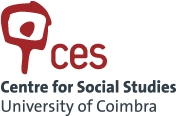Conference
Representation, Objects and Agency in Law and Religion
June 13 to 15, 2016
Veneziana Room, Monash University Prato Centre (Italy)
Abstract
The increased importance of religion in social, legal and political affairs demands new approaches to interdisciplinary scholarship. Legal questions include relations between state law, international legal instruments and religious codes. These overlap, for example, in religious tribunals and alternative dispute resolution (eg UK), in the industry codes and federal government guidelines for halal meat in Australia (Senate Economics References Committee on Third Party Certification of Food, 2015), and in cases brought before European courts regarding religious pluralism in public affairs .
Legal and public administration scholars also inquire into the interrelations of law and the technologies required for its enforcement, from ICT in courts to the architectural and symbolic settings required for the efficient and legitimate administration of justice (Branco 2015, Contini and Lanzara 2009). Legal interpretation, comparative law and conflict of laws are central to these inquiries. Law, religion, technology, architecture and their related informal regulations display their effects on society and human agencies through assemblages supporting practices and representations. In each case these must be connected by chains of interpretation.
These must link not only symbols, objects and images, but also the practices and ethical, legal and technological frameworks in which they are embedded. Just as interpreters are necessary in multi-lingual communities (the UN, EU, or multicultural Australia), thicker interpretation is needed in pluralist communities between legal, ethical and religious practices and their respective signs and representations. That can only be achieved by openness to alternative communities and their interpretive contexts. The conference would bring together participants from three continents from disciplines of Law, Sociology, Philosophy, Semiotics, Political Sciences, Anthropology and Architecture. The focus of the conference is on the interpretive and performative techniques of law, religion, technology, architecture and related informal legal orders.
Papers and discussions would address:
•the semiotic and technological conditions for successfully constituting a legal and social order;
• the role and importance of cultural contexts for recognising, understanding and modulating between alternative orders and technologies;
• how these considerations apply to key issues of legal, ethical and religious power in contemporary societies in Australia, Europe and North America;
• participants will seek to reach practical conclusions regarding communicative good will and semiotic competence to improve intercultural and interlegal communication.
We envisage a two day symposium, preceded by a one day cultural tour and workshop focusing on agency in religious art, architecture and legal technology in Prato and surrounds, possibly led by Prof Lanzara and Dr Marcello. The tour would be open to students and visiting academics, who would come together to reflect on interpretation and cultural translation between this experience and their home culture.
Organisers:
Nadirsyah Hosen, Law, Monash University
Richard Mohr, Sociology and Social Research, Policy and Planning Pty Ltd, Australia
Francesco Contini, Istituto di ricerca sui sistemi giudiziari (IRSIG-CNR), Bologna
Patrícia Branco, Centro de Estudos Sociais, Coimbra
Massimo Leone, Professor of Semiotics and Cultural Semiotics, Department of Philosophy, University of Turin

